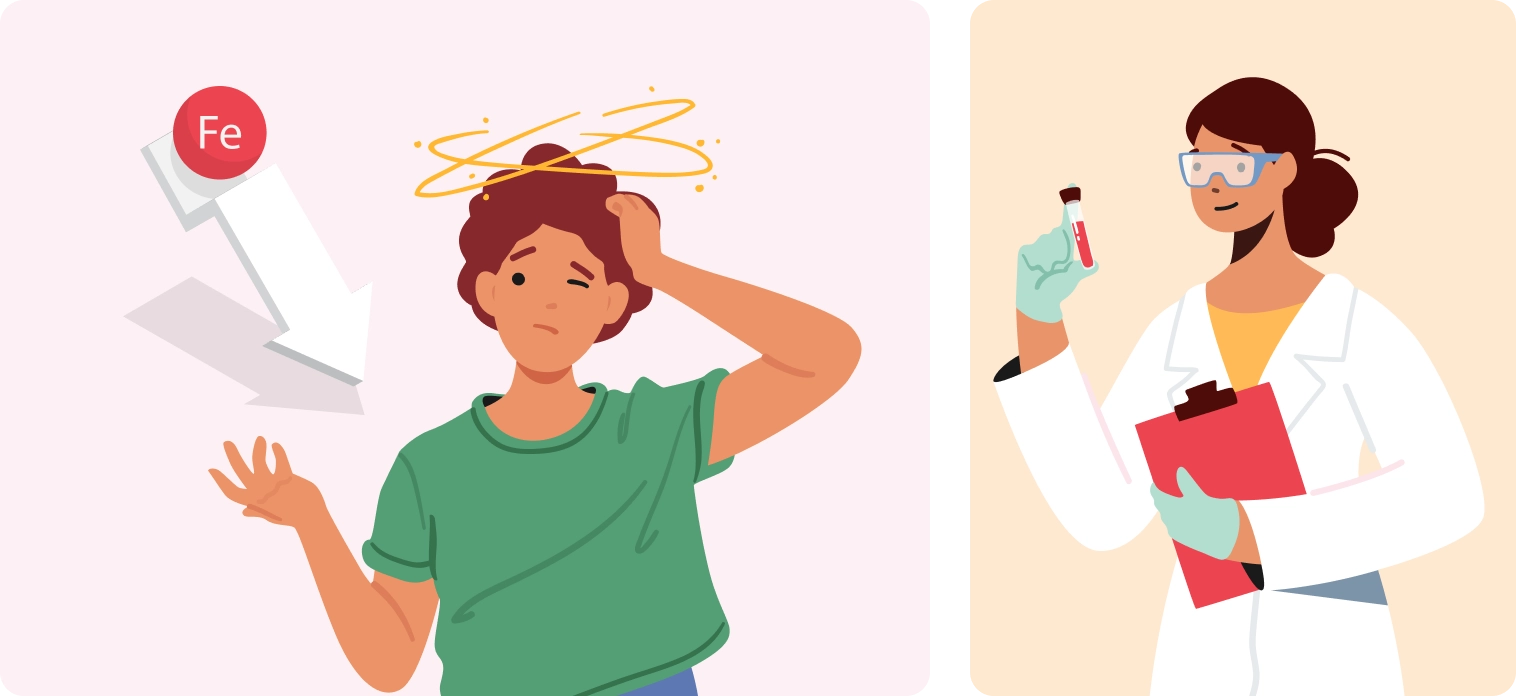Overview
Iron deficiency anaemia is the most common type of anaemia. It occurs when your body lacks enough iron to produce haemoglobin—the protein your body needs for red blood cells to be healthy and able to carry oxygen throughout your body. Without adequate oxygen, you may become tired or short of breath.
Iron deficiency anaemia can affect anyone, but it is more common in women with heavy periods and pregnant women. Vegetarians, adolescents during a growth spurt, people with ulcers, frequent blood donors and older adults with a poor diet or a medical condition that affects nutrient absorption, are also more at risk.

Causes
Iron deficiency anaemia can arise from various factors, including:
- Inadequate dietary intake of iron-rich foods (red meat, poultry, fish, beans, and dark leafy greens)
- Blood loss—often from heavy menstruation, gastrointestinal bleeding, haemorrhoids (piles), or conditions like stomach ulcers or certain bowel and stomach cancers
- Medical conditions that impair the absorption of iron from the diet such as celiac disease, inflammatory bowel disease, or if part of your small intestine has been bypassed or removed.
- Growth spurts during infancy and adolescence
- Pregnancy and lactation that increase the body’s demand for iron
- Taking NSAIDs such as ibuprofen and aspirin
Symptoms
Common Iron deficiency anemia symptoms may include:
- Extreme fatigue, weakness, lack of energy
- Pale skin
- Chest pain
- Noticeably faster heartbeat
- Shortness of breath
- Headache, dizziness or lightheadedness
- Cold hands and feet
- Inflamed or sore tongue
- Brittle nails
- Unusual cravings for non-food items such as ice or paper.
- Poor appetite, especially in infants and children
Left untreated, iron deficiency anemia can lead to:
- An impaired immune system, leading to infections and other illnesses
- Heart and lung problems, such as tachycardia (a fast heartbeat), enlarged heart, and heart failure
- Complications during pregnancy and premature births
- Growth problems such as delayed growth and development.
Treatment
Treating iron deficiency anaemia depends on its cause. Here are some of the more common treatment approaches:
- Iron supplementation in the form of ferrous sulphate, ferrous gluconate, or ferrous fumarate, usually taken orally for about six months
- Increasing the intake of iron-rich foods (red meat, poultry, fish, beans, lentils, tofu, spinach, and fortified cereals)
- Consuming vitamin C or vitamin C-rich foods to enhance iron absorption
- Surgery, if you have chronic blood loss, such as gastrointestinal bleeding
- Blood transfusion, only in severe cases
FAQ
How do I know if I have anaemia?
If you show symptoms of anaemia, your GP will run multiple laboratory tests usually starting with a complete blood count (CBC) or full blood count (FBC) test. They will also take a look at your lifestyle, medical history, and revisit your symptoms.
How do you fix anaemia?
The most common treatments are iron supplements and the consumption of iron-rich foods. Vitamin C is usually also prescribed in parallel to iron supplementation to help with iron absorption.
How long does it take for anaemia to improve?
Mild cases of anaemia may cause few or no symptoms and can often be managed with dietary changes or supplements over 6 months.



















